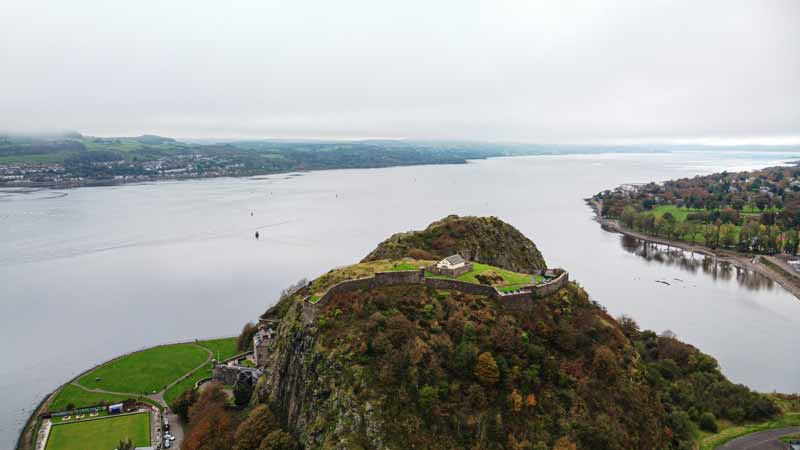The journey to Dumbarton Castle, unique in its geographical location and centuries of history, begins with an introduction to the town at the foot of which this historic structure stands.
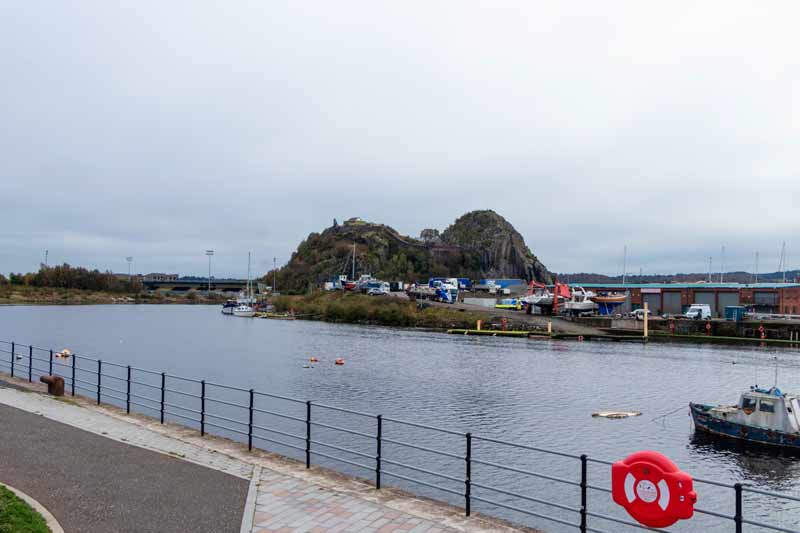
Dumbarton Town: charm of the Scottish style
The town of Dumbarton is located in the western part of Scotland in the region of Dumbartonshire. It stands on the north bank of the River Clyde at its confluence with the waters of the River Leven.
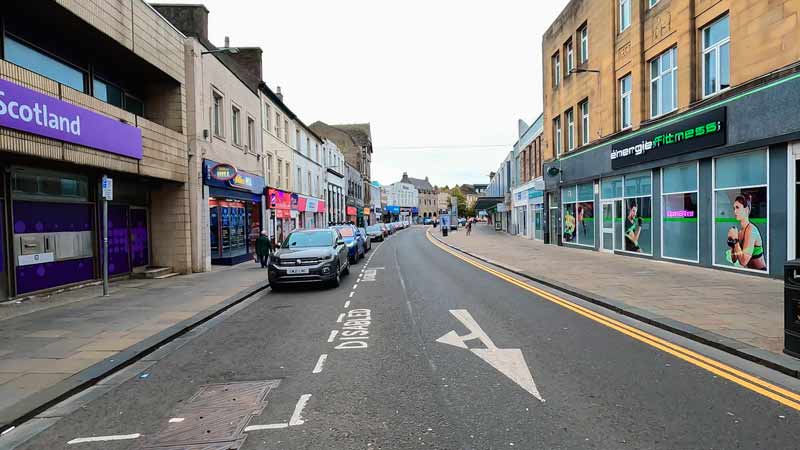
The town is distinguished by its rich history, beautiful natural landscapes and the severe, practical charm characteristic of Scotland.
Architectural Appearance:
Shops, coffee houses and salons are traditionally located on the ground floors.

After walking through the city streets visitors reach a cosy embankment which offers a view of moored boats, the river, and, of course, the main attraction—Dumbarton Castle.
Geography and strategic importance of Dumbarton Rock
Dumbarton Castle was once one of the most powerful and important military-strategic outposts in Scotland. It is located on Dumbarton Rock which, like a mighty guard, towers over the mouth of the Clyde and the town itself.
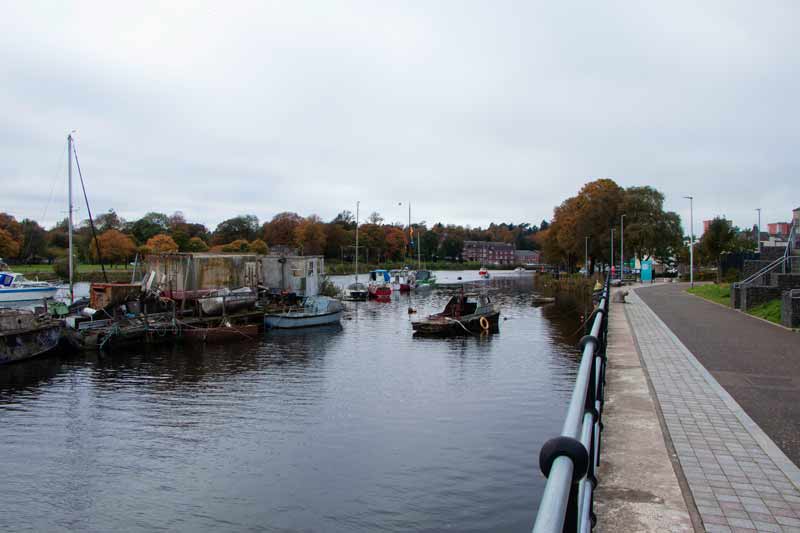
Fortress Location:

This modern architectural monument invites you to take a walk into the past and personally enjoy unique views from the top of the crag.
Attractions and the ascent to the summit
Visitors enter the castle grounds by passing through the central arched entrance. A memorial plaque is placed on its wall in memory of Lieutenant Colonel James Clark – Commander of the 9th Battalion of the Argyll and Sutherland Highlanders.

The Way Up:
- The ascent involves numerous stairs and walkways.
- The height of the crag is about 73m. The path up includes about 500 steps.
- The ascent itself between sheer stone walls is impressive and intriguing and makes the walk feel like a mysterious journey into the past.
The Governor’s house stands on a green plain between the crags. This 18th-century building served as a palace for the castle’s ruler.

What to See at the Fortress:
- Military reminders: Strolling the grounds tourists encounter cannons which serve as a reminder that the fortress was primarily a military-defensive structure.
- Museum: The Governor’s House hosts a museum showcasing the castle’s history, old images of destroyed structures and various artefacts.
- Portcullis Arch: One of the oldest structures in the fortress built in the 14th century.
- French prison: An 18th-century building that is well-preserved to this day.
- The Magazine: A structure built in 1748 which is located near the summit.
- Excavation site: The foundation of a tower was found where William Wallace was allegedly held captive before he was executed in 1305.
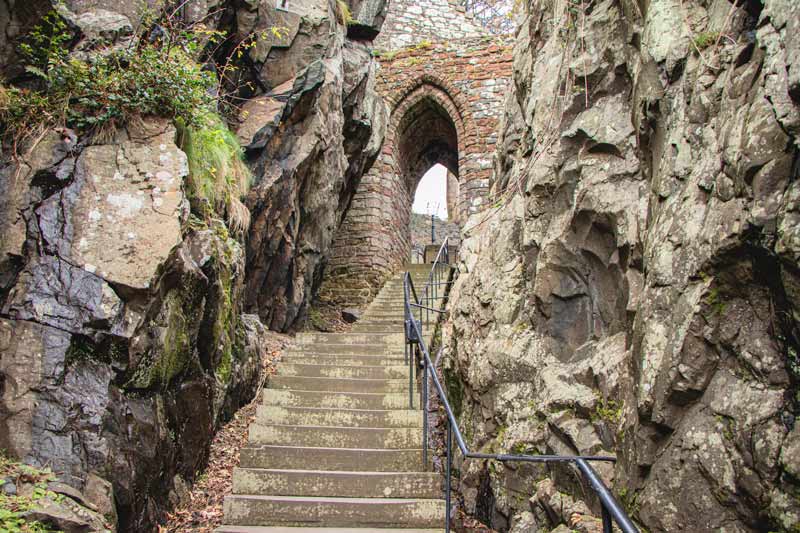
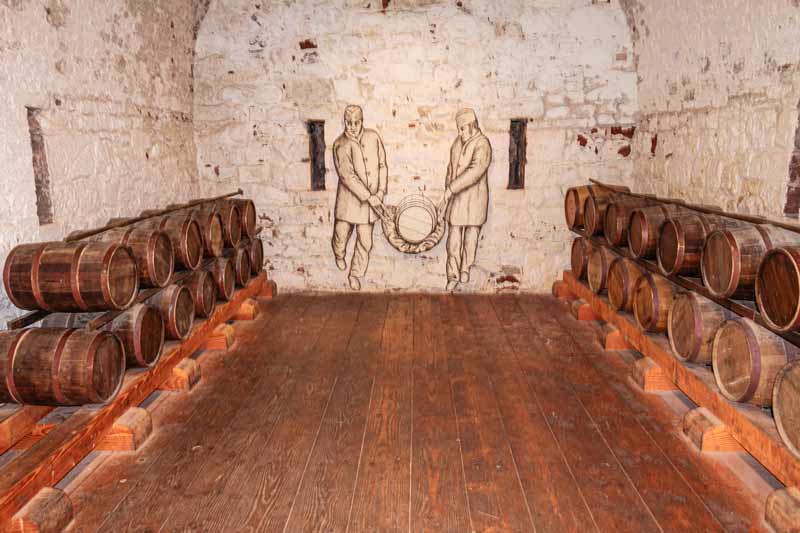
History of the ancient fortification
Dumbarton Castle today holds the title of the most ancient fortification in Britain.
Key historical milestones:
- 450AD: Considered the beginning of the fortress’s history when it was mentioned by St. Patrick.
- Up until 1034: Dumbarton was the centre of the Kingdom of the Britons of Alt Clut.
- Middle Ages: The fortress served as a Scottish outpost and withstood sieges by the Vikings.
- After 1263: The fortress lost its significant military importance.
- Decline (17th century): Most of the original ancient buildings were demolished or destroyed during the period from 1670 to 1790. Most of the structures visible today (the French prison and the Governor’s house) were erected after this time.

Views from the summit
Breathtaking views open up from the height of Dumbarton Rock. The town, the bay and the mouths of the Rivers Leven and Clyde are visible. Scottish landscapes stretch far beyond the horizon line.
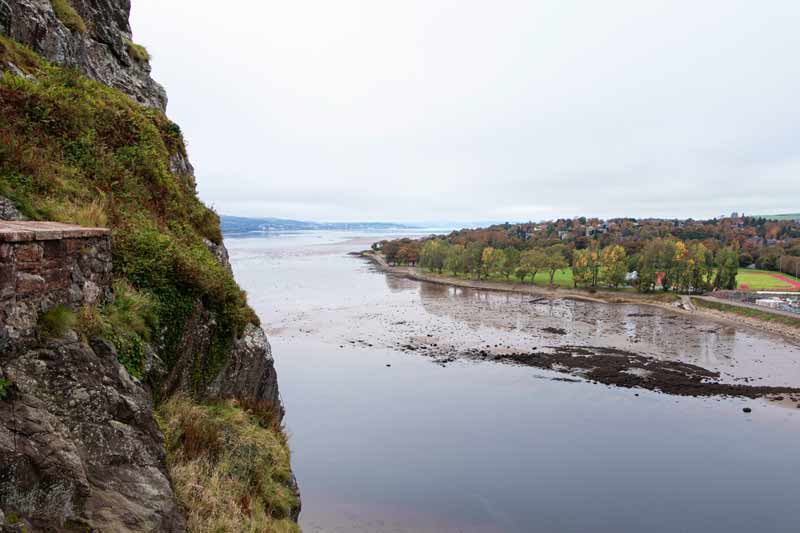
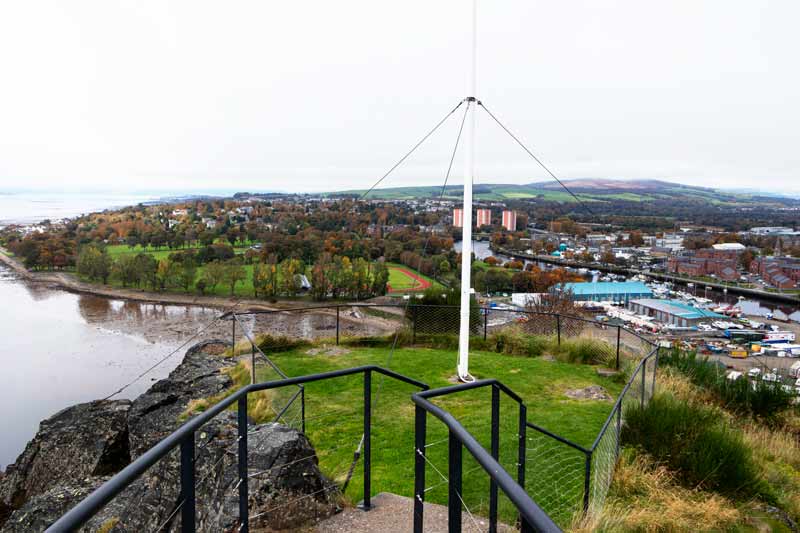

The spirit is captivated by the beauty and the understanding that many hundreds of years ago kings and noblemen admired these very same landscapes from Dumbarton Rock. From the summit a wide view opens up over the River Clyde. The Campsie and Kilpatrick hills are also visible and, in the distance, the boundless expanse of Scotland stretch out, shrouded in a light mist.
Dumbarton Castle and Fortress is open for visits year-round. It is easily accessible from Glasgow by bus or car.
